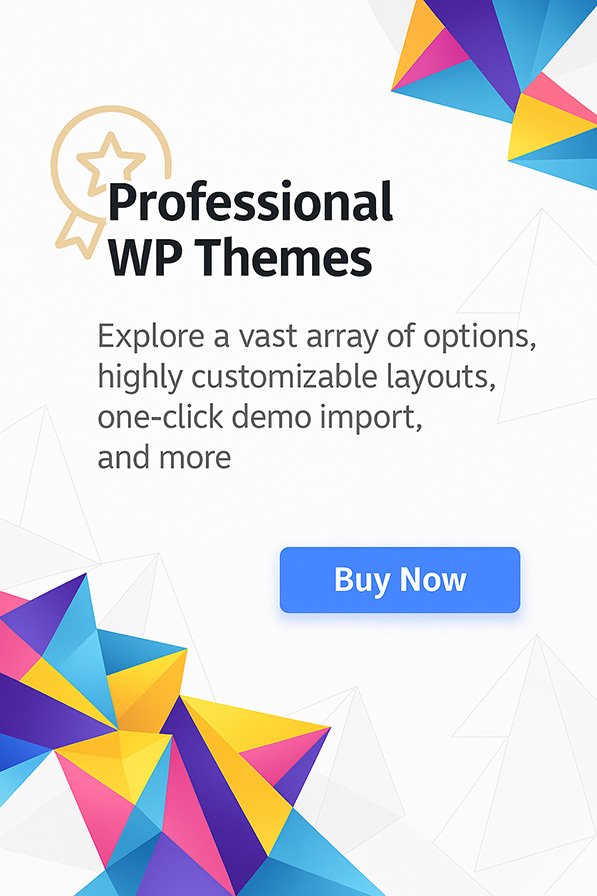Remember when careers felt like ascending a staircase? Each step represented predictable advancement—promotion, salary increase, expanded responsibilities. Today’s professional landscape resembles less a staircase and more a perpetual obstacle course where the ground shifts beneath your feet. We talk endlessly about the skills needed for this environment—adaptability, resilience, continuous learning. But we rarely acknowledge the hidden cost: the profound emotional labor of constant reinvention. This invisible weight shapes careers more profoundly than any technical capability, yet remains largely unaddressed in professional development conversations.
The New Normal: Perpetual Motion as Requirement
The industrial economy promised stability in exchange for loyalty. The knowledge economy offered growth through specialization. The emerging economy demands something entirely different: perpetual motion. Careers now resemble ongoing research projects rather than linear progression. The average person will hold 12 different jobs before retirement, with complete industry shifts becoming commonplace.
This transformation stems from multiple forces converging simultaneously. Automation eliminates routine tasks across sectors. Globalization creates competitive pressures that reshape industries overnight. Technological acceleration shortens the half-life of expertise. Economic volatility disrupts even seemingly secure fields. The result? Professional identity has become fluid rather than fixed.
We celebrate this flexibility as liberation—and in many ways, it is. But we’ve failed to acknowledge the psychological toll of constant reinvention. Each career transition, skill acquisition, or directional change carries emotional weight that accumulates over time. This invisible burden shapes decisions, limits possibilities, and often determines success more powerfully than technical competence.
The Four Pillars of Career Emotional Labor
The emotional work of modern careers manifests in four distinct forms, each requiring different resources to manage effectively:
Identity Reconstruction
Your job title once provided a clear social identity—engineer, teacher, accountant. Today’s professionals often construct identities from multiple components: primary role, side projects, emerging skills, and evolving interests. This fragmentation creates what psychologists call “identity discontinuity”—the uneasy feeling that your professional self is perpetually under construction.
A software developer I interviewed described this experience: “I spent years becoming an expert in a programming language that’s now obsolete. When I transitioned to product management, I felt like an imposter. Now I’m learning AI integration, and I wonder: who am I professionally? The answer changes every six months.”
This constant identity reconstruction requires significant emotional energy. Each time you acquire new skills or change roles, you must reintegrate your self-concept, rebuild confidence in unfamiliar territory, and reconcile past achievements with present learning curves. This process isn’t just cognitive—it’s deeply emotional.
Decision Exhaustion
Traditional careers offered limited decision points: education, first job, promotions, retirement. Modern professionals face continuous choices: which skills to develop, which opportunities to pursue, which networks to build, which trends to ignore. This decision density creates what psychologists call “choice fatigue”—the deteriorating quality of decisions after extended periods of decision-making.
A marketing executive captured this perfectly: “Every week brings another ‘should I?’ moment. Should I learn data analytics? Should I pursue that certification? Should I attend that conference? Should I start a newsletter? Each choice feels potentially career-defining. The mental load is exhausting.”
This exhaustion isn’t just about the number of decisions—it’s about their perceived significance. When every choice feels potentially pivotal, decision-making becomes emotionally taxing rather than empowering.
Social Navigation
Professional success has always involved relationships, but modern careers require sophisticated social navigation across multiple contexts simultaneously. You must maintain credibility within your current role while building connections in adjacent fields. You need mentors who understand your trajectory while also serving as mentor to others. You must balance authenticity with strategic impression management across different professional communities.
A healthcare administrator transitioning to health technology described this challenge: “In my hospital role, I’m the experienced expert. In tech circles, I’m the newcomer trying to prove myself. With potential employers, I need to position my healthcare experience as valuable rather than outdated. Keeping these social contexts straight—and maintaining authenticity in each—feels like emotional gymnastics.”
This social navigation requires constant code-switching, impression management, and relationship calibration across different professional contexts. The emotional labor increases as your career becomes more multifaceted.
Uncertainty Tolerance
Perhaps the most demanding emotional work involves building tolerance for prolonged uncertainty. Traditional careers offered predictable milestones and relatively clear advancement paths. Modern careers often involve extended periods without external validation or clear direction.
A freelance writer illustrated this experience: “I left a stable corporate job to build a writing career. For eighteen months, I had no idea if this would work. No steady paycheck, no promotions to strive for, no clear indicators of progress. Just daily uncertainty about whether this path would lead anywhere sustainable.”
This uncertainty tolerance isn’t just about financial risk—it’s about the emotional capacity to persist without external validation, to maintain motivation amid ambiguity, and to find internal metrics of progress when external ones are unclear.
The Compounding Effect: Why This Weight Grows Heavier
These emotional labor components don’t exist in isolation—they compound over time. Identity reconstruction makes decision-making harder because choices feel more consequential. Decision exhaustion erodes the energy needed for social navigation. Uncertainty undermines identity stability. Each element amplifies the others.
This compounding effect explains why career transitions often become more difficult rather than easier with experience. Early-career transitions involve fewer identity attachments, simpler social contexts, and lower stakes. Mid-career transitions carry the weight of established professional identities, complex relationship networks, and greater financial responsibilities.
A financial services professional transitioning to sustainability work captured this dynamic: “When I was twenty-five, changing jobs felt exciting. At forty-five, changing industries feels like dismantling part of who I am. I have more to lose, more people watching, and more at stake financially. The emotional weight is exponentially heavier.”
Reframing the Load: Strategies for Emotional Sustainability
Addressing this emotional labor doesn’t mean avoiding career changes or seeking stability at all costs. It means developing strategies to make the weight manageable:
Embrace Identity Pluralism
Instead of striving for a unified professional identity, embrace the complexity of multiple professional selves. Recognize that different contexts may activate different aspects of your expertise and perspective. This pluralism reduces the pressure to present a consistent identity across all professional contexts.
A consultant who transitioned from nonprofit leadership adopted this approach: “I used to worry about appearing inconsistent. Now I see myself as having multiple professional identities that serve different purposes. In boardrooms, I draw on my executive experience. With startups, I emphasize my entrepreneurial mindset. With nonprofits, I connect to my mission-driven roots. Each is authentically me, just different facets.”
Implement Decision Frameworks
Reduce decision exhaustion by creating personal frameworks for recurring choices. Develop clear criteria for skill development investments, opportunity evaluation, and time allocation. These frameworks transform emotionally charged decisions into structured assessments.
A technology leader created what she calls her “career investment rubric”: “I evaluate opportunities based on three factors: learning potential, relationship expansion, and energy impact. This framework helps me say no to good opportunities that don’t align with my current priorities. It reduces the emotional toll of constant decision-making.”
Cultivate Contextual Relationships
Rather than trying to maintain a consistent professional persona across all contexts, cultivate relationships specific to each professional environment. This contextual authenticity reduces the emotional labor of code-switching and impression management.
A professor who also consults with corporations described this approach: “With academic colleagues, I’m theory-focused and collaborative. With corporate clients, I’m pragmatic and directive. I used to worry about being ‘inauthentic,’ but now I see it as speaking different professional languages. Each relationship thrives because I meet people where they are rather than forcing them into a single version of me.”
Develop Uncertainty Practices
Build specific practices to sustain yourself through periods of professional uncertainty. These might include progress journaling, peer support groups, or internal metrics that track growth beyond external validation.
An entrepreneur who founded her third startup after two failures shared her practice: “Every Friday, I write down three things I learned that week, regardless of business outcomes. During uncertain times, this practice reminds me that I’m making progress even when external results are unclear. It builds emotional resilience for the long journey.”
The Systemic Dimension: Beyond Individual Responsibility
While individual strategies matter, we must recognize that this emotional labor isn’t solely a personal challenge—it’s a systemic issue. Organizations, educational institutions, and policymakers all have roles to play in creating more sustainable career ecosystems:
Organizations can support career emotional labor through transition support programs, internal mobility pathways that value diverse experiences, and cultures that normalize reinvention rather than penalizing it.
Educational institutions can prepare students not just with technical skills but with emotional capacities for career navigation—identity management, decision-making frameworks, and uncertainty tolerance.
Policy makers can create safety nets that make career experimentation less risky—portable benefits, lifelong learning accounts, and transition support for displaced workers.
A technology company I’ve studied implemented what they call “career resilience benefits”—dedicated time for skill development, transition coaching for internal moves, and peer support groups for employees navigating significant role changes. These resources acknowledge the emotional dimensions of career development while providing practical support.
The Paradox of Choice: Freedom Within Constraints
Modern careers offer unprecedented freedom to shape professional paths, but this freedom exists within structural constraints. Economic realities, market demands, and personal responsibilities all limit possibilities. The emotional labor of career navigation comes from navigating this tension between freedom and constraint.
The most sustainable approach isn’t unlimited flexibility nor rigid adherence to predetermined paths. It’s what psychologists call “structured flexibility”—clear personal principles that guide decisions while allowing for adaptation within those boundaries.
A healthcare professional who transitioned to policy work described this balance: “I have core principles about the kind of impact I want to have, but I’m flexible about how I achieve it. This framework gives me enough structure to avoid decision paralysis while allowing room for unexpected opportunities. It reduces the emotional weight of constant choice.”
Conclusion: Making the Invisible Visible
The emotional labor of modern career reinvention represents one of the most significant yet underdiscussed challenges of contemporary work life. By acknowledging this invisible weight—both individually and systemically—we can develop more sustainable approaches to career development.
This doesn’t mean seeking stability at the expense of growth. It means recognizing that perpetual motion requires emotional stamina as much as technical skill. It means building career practices that sustain us psychologically as well as professionally.
The future belongs not just to those who acquire the right skills, but to those who develop the emotional resilience to navigate constant change with intention and authenticity. By making this invisible labor visible, we create the possibility of careers that are not just successful but sustainable—professional lives that honor both our ambitions and our humanity.







